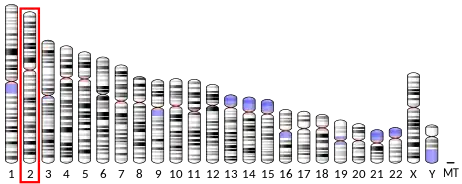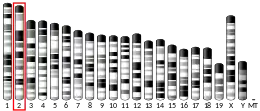| CKAP2L | |||||||||||||||||||||||||||||||||||||||||||||||||||
|---|---|---|---|---|---|---|---|---|---|---|---|---|---|---|---|---|---|---|---|---|---|---|---|---|---|---|---|---|---|---|---|---|---|---|---|---|---|---|---|---|---|---|---|---|---|---|---|---|---|---|---|
| Identifiers | |||||||||||||||||||||||||||||||||||||||||||||||||||
| Aliases | CKAP2L, cytoskeleton associated protein 2 like | ||||||||||||||||||||||||||||||||||||||||||||||||||
| External IDs | OMIM: 616174 MGI: 1917716 HomoloGene: 51866 GeneCards: CKAP2L | ||||||||||||||||||||||||||||||||||||||||||||||||||
| |||||||||||||||||||||||||||||||||||||||||||||||||||
| |||||||||||||||||||||||||||||||||||||||||||||||||||
| |||||||||||||||||||||||||||||||||||||||||||||||||||
| |||||||||||||||||||||||||||||||||||||||||||||||||||
| Wikidata | |||||||||||||||||||||||||||||||||||||||||||||||||||
| |||||||||||||||||||||||||||||||||||||||||||||||||||
Cytoskeleton associated protein 2 like is a protein that in humans is encoded by the CKAP2L gene. [5]
Function
The protein encoded by this gene is thought to be a mitotic spindle protein important to neural stem or progenitor cells. Mutations in this gene have been associated with spindle organization defects, including mitotic spindle defects, lagging chromosomes, and chromatin bridges. There is evidence that mutations in this gene are associated with Filippi syndrome, characterized by growth defects, microcephaly, intellectual disability, facial feature defects, and syndactyly. There is a pseudogene of this gene on chromosome 20. Alternative splicing results in multiple transcript variants. [provided by RefSeq, Jan 2015].
References
- 1 2 3 GRCh38: Ensembl release 89: ENSG00000169607 - Ensembl, May 2017
- 1 2 3 GRCm38: Ensembl release 89: ENSMUSG00000048327 - Ensembl, May 2017
- ↑ "Human PubMed Reference:". National Center for Biotechnology Information, U.S. National Library of Medicine.
- ↑ "Mouse PubMed Reference:". National Center for Biotechnology Information, U.S. National Library of Medicine.
- ↑ "Entrez Gene: Cytoskeleton associated protein 2 like". Retrieved 2018-05-24.
Further reading
- Fiebig A, Jepsen S, Loos BG, Scholz C, Schäfer C, Rühling A, Nothnagel M, Eickholz P, van der Velden U, Schenck K, Schreiber S, Grössner-Schreiber B (November 2008). "Polymorphisms in the interleukin-1 (IL1) gene cluster are not associated with aggressive periodontitis in a large Caucasian population". Genomics. 92 (5): 309–15. doi:10.1016/j.ygeno.2008.07.004. PMID 18723088.
- Dick DM, Meyers J, Aliev F, Nurnberger J, Kramer J, Kuperman S, Porjesz B, Tischfield J, Edenberg HJ, Foroud T, Schuckit M, Goate A, Hesselbrock V, Bierut L (September 2010). "Evidence for genes on chromosome 2 contributing to alcohol dependence with conduct disorder and suicide attempts". Am. J. Med. Genet. B Neuropsychiatr. Genet. 153B (6): 1179–88. doi:10.1002/ajmg.b.31089. PMC 3597340. PMID 20468071.
- Yumoto T, Nakadate K, Nakamura Y, Sugitani Y, Sugitani-Yoshida R, Ueda S, Sakakibara S (2013). "Radmis, a novel mitotic spindle protein that functions in cell division of neural progenitors". PLOS ONE. 8 (11): e79895. Bibcode:2013PLoSO...879895Y. doi:10.1371/journal.pone.0079895. PMC 3832648. PMID 24260314.
This article incorporates text from the United States National Library of Medicine, which is in the public domain.



